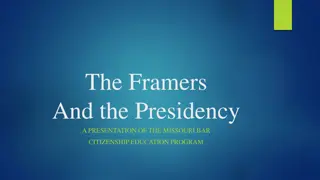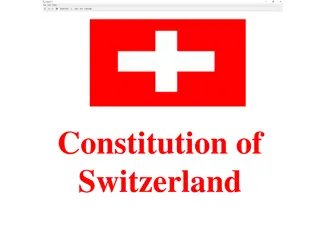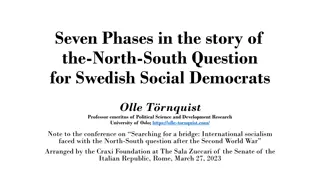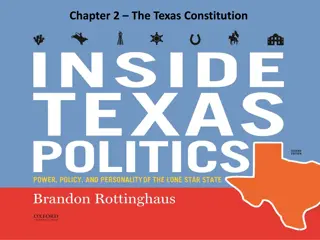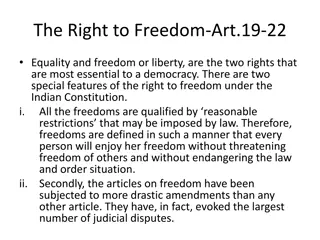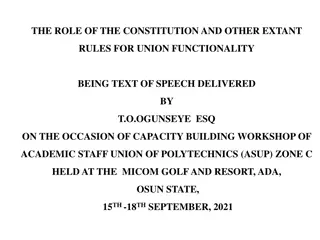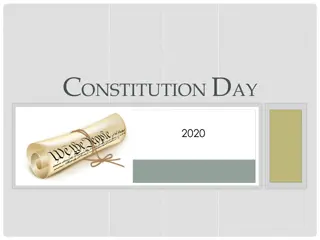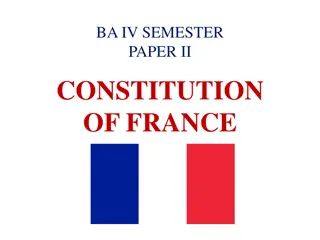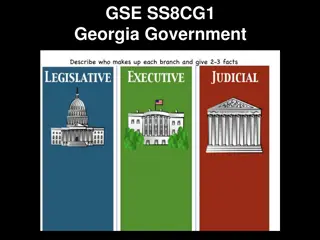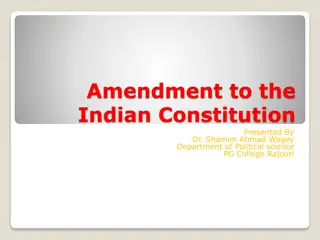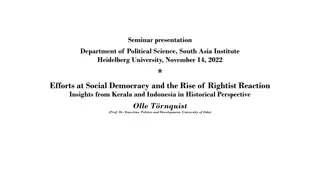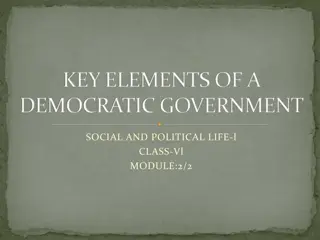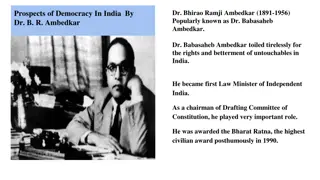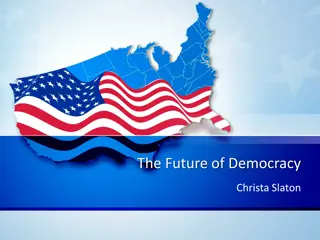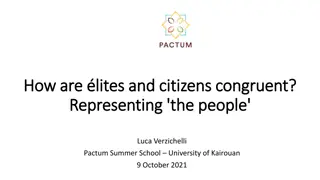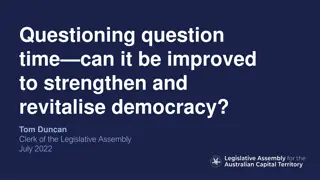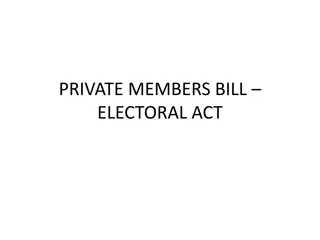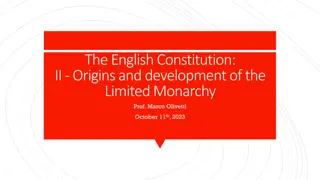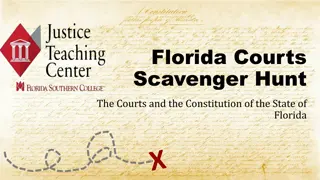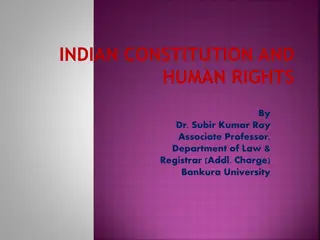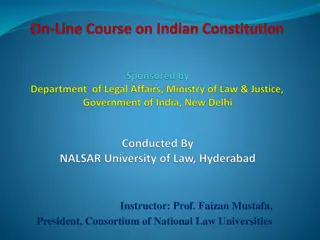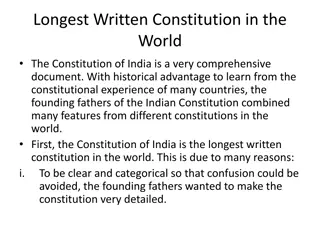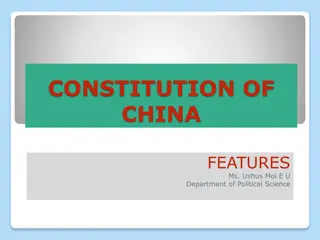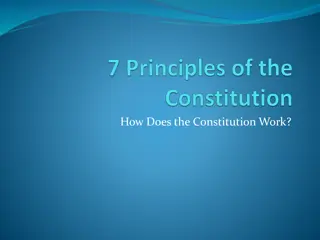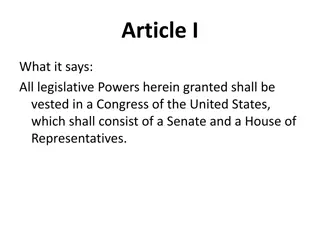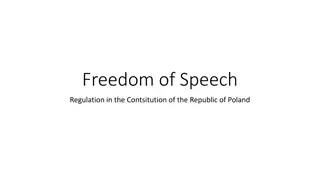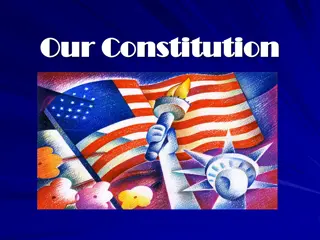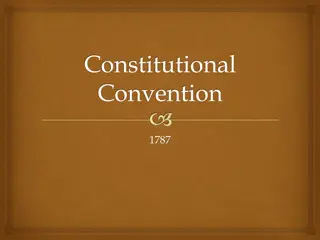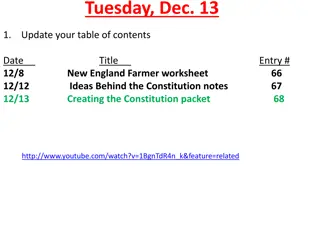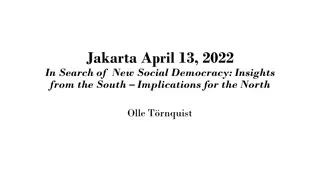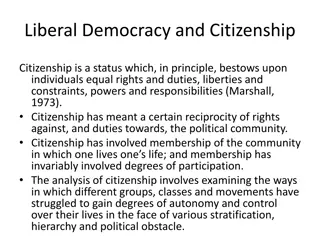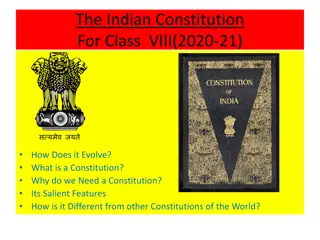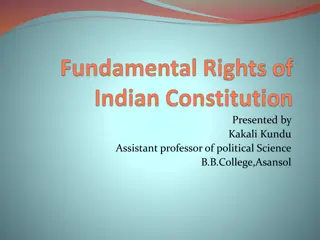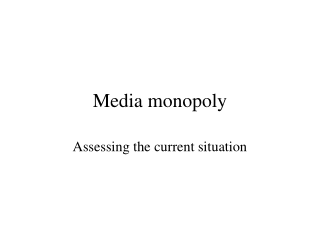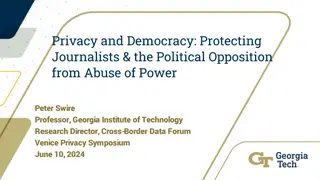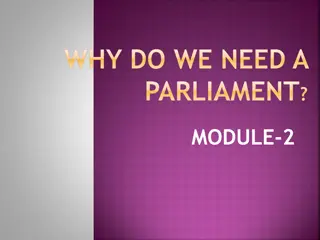Evolution of Democracy in the Framers' Constitution
The evolution of democracy in the Framers' Constitution is highlighted through the limitations they faced, such as compromises on slavery and Senate representation, alongside undemocratic elements like suffrage restrictions. Despite these challenges, democratic principles were reinforced through amendments, political changes, and shifts towards greater inclusivity and equality.
Download Presentation

Please find below an Image/Link to download the presentation.
The content on the website is provided AS IS for your information and personal use only. It may not be sold, licensed, or shared on other websites without obtaining consent from the author. Download presentation by click this link. If you encounter any issues during the download, it is possible that the publisher has removed the file from their server.
E N D
Presentation Transcript
What the Framers Couldn t Know ROBERT DAHL
What the Framers Couldn't Do: Consider anything other than a republican form of government Do exactly what they, or political theory, thought was best - they had to compromise on: Slavery Representation in the Senate
Undemocratic Elements in the Framer's Constitution : Slavery Suffrage Election of the President Choosing Senators Equal representation in the Senate Judicial power Too vague and unrestrained powers Congressional power At times too restrained powers, preventing Congress to do those things necessary to be done
The Framer's Constitution Meets Emergent Democratic Beliefs: The proto-republican phase Pre-revolution argument that government should be by the people The republican phase The Declaration of Independence; "all men are created equal" Toward a democratic republic Post-revolution, westward expansion, and Jacksonian-era politics brought government even more so to the people
Democratic Changes to the Framer's Constitution: Amendments The Bill of Rights Other Amendments 13-15 - resolved slavery issue; eliminate discrimination against all groups of people 16 - income tax 17 - direct election of senators 19 - women's suffrage 24 - elimination of poll tax 26 - 18 year-old suffrage
Democratic Changes in Political Practices and Institutions Political parties The electoral college Partisanship has become a key component; unequal representation amongst the states
The Democratic Revolution: What Madison Learned - and Taught Even Madison underwent a democratic revolution in which he went from an avid supporter of checks on the people (Federalists 10 and 51) to more widespread acceptance and promotion of democracy for all
Conclusions Concerning the Framers Undemocratic Constitution: Undemocratic elements of the original constitution do not necessarily reflect the framer's intentions Some undemocratic elements were deemed necessary compromise for the document's passage The undemocratic elements of the constitution were built in due to an unrealistic fear of the dangers of popular majorities Though these defects are serious and remain with us to this day, it is difficult (if not impossible) to imagine what the alternative could have been


